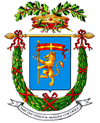
Cooking in The Province of Messina
Messina was founded by the Greeks in the eighth century BC and was called Xancle (scythe) because of the shape of its harbor. In the fifth century BC, it was renamed Messene after the Greek city of the same name. This city, located fifty-five miles north of Catania, was rebuilt into a modern and energetic city after it was destroyed by the earthquake and tsunami of 1908.
Messina has over 250,000 inhabitants, and the city’s most important resources are the cultivation of citrus fruits, commercial fishing and mussel farming. The shipyards are very active and, being that Messina is the closest location to the mainland, it is an important trade center. Tourism is also an important factor in the economy of this province. Tyndaris, Milazzo and Lipari are ancient sites known for their monumental ruins of civilizations since prehistoric times.
The town of Taormina and the nearby Giardini-Naxos, for instance, offer history and art. Everywhere you look there are magical and alluring attractions for the national and international tourists. Taormina is nestled on top of a rocky plateau, in front, the snow-covered Etna. The town overlooks orange and lemon groves and the Ionian Sea, where below Giardini-Naxos is located. In the daytime, German tourists climb Mount Etna to ski and, in the afternoon, walk the sandy beach of Giardini-Naxos to swim the clear and blue waters of the sea.
The mild weather, the people and the easy pace of life are characteristic of this area. In ancient and modern times, kings and famous people visited Taormina and built villas in which they could spend their leisure time. Goethe, G. De Maupassant, D.H. Lawrence, A. France, Oscar Wilde, to mention a few illustrious people, publicized and made those destinations well-known the world over.

On the table, Messina offers many specialties. The large amount of swordfish available renders this delicious fish part of many recipes. The impanata is a dough stuffed with swordfish sautéed with onions, tomatoes, celery, capers, raisins, pine nuts, olives and cheese, then baked slowly and enjoyed on special occasions or for the holidays. The versatile swordfish can be grilled, boiled and served with oil and lemon; as bracioli, rolled and stuffed with aromatic breadcrumbs; or alla ghiotta, cooked in a light tomato sauce. Artichokes are also abundant and prepared in a variety of ways.
The most famous pasta dish is the pasta ‘ncaciata, made with cheeses, meat, salami, eggplants, boiled sliced eggs, and even more diced cheese added and baked. Linguine with swordfish is easy to prepare and delizioso!
Stocco alla ghiotta, a truly local specialty, is stockfish in an aromatic light tomato-wine sauce, slowly simmered for three hours, with capers and olives added before serving.
Among the meat dishes is agnello al forno, baked lamb with olives, pecorino cheese and wine; tender and meaty lamb chops are grilled and basted with herbed lemon. Chickens and rabbits are prepared in inventive ways. The pork and plum sausages have a different taste due to the alternate variety of feeding.
Large amounts of cheese are produced in the Peloritani and Nebrodi Mountains: the sweet and lightly acidulated Provola dei Nebrodi or the aromatic Maiorchino, a hard cheese, are the most renowned.
One of the most famous desserts is the pignuccata, small fried bigne’ filled with light custard, arranged into a pyramid shape and covered with chocolate cream.
The mostarda, made with wine must, is a sort of dry marmalade and the cotognata, quince preserves, are exclusive to the province of Messina.
- Sicilian Appetizers
- Sicilian Delicacies
- Baked Delicacies
- Sicilian Pasta Recipes
- Traditional Sicilian Pasta
- Meatless Pasta Recipes
- Legumes and Vegetables Pastas
- Rice Recipes
- Sauces and Condiments
- Meat Recipes
- Seafood Recipes
- Egg Recipes
- Sicilian Salads
- Vegetable Recipes
- Sicilian Desserts
- Wines and Rosolio
- Festino – St. Rosalie's Feast
- Christmas – Natale
- Easter – Pasqua
- Saint Joseph Table
- Recipes of the Italian Regions
- About the Italian Regions
